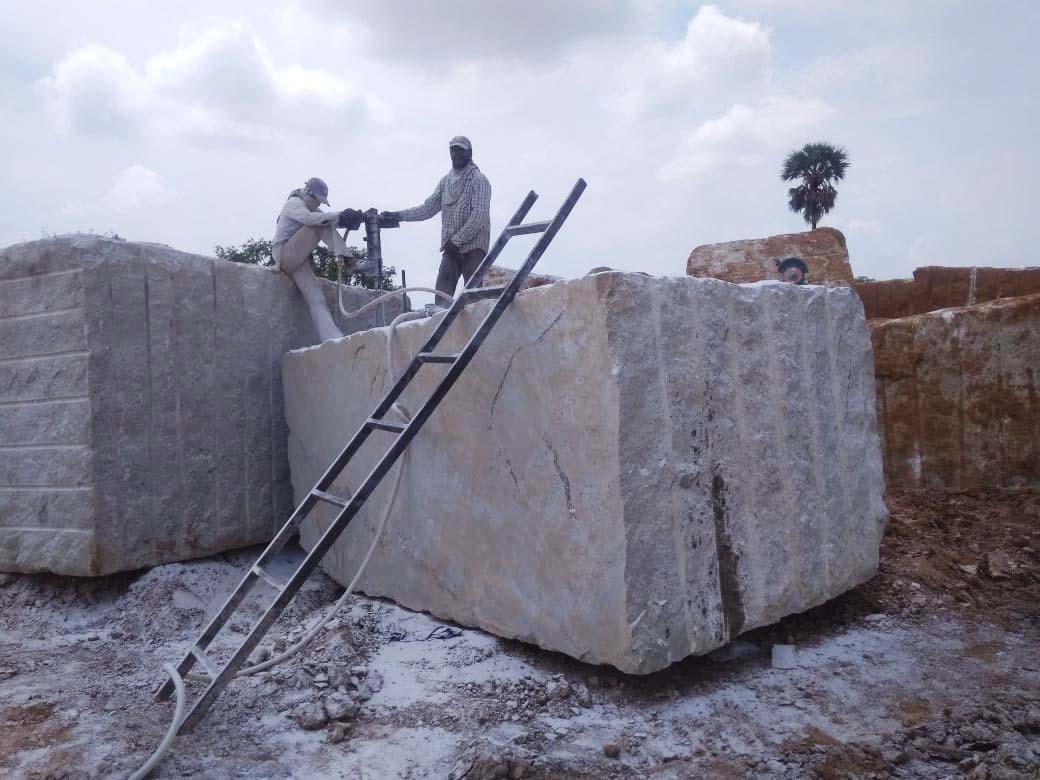Introducing the Mysteries of Granite Quarrying: Where Toughness and Sophistication Meet
The world of granite quarrying is a realm where the raw stamina of nature merges with human artistry to produce structures that stand the test of time with an air of beauty. From the depths of quarries to the meticulous polishing in workshops, the process of transforming granite into building marvels is a complex dancing of practice and development. As we peer into the depths of this ancient craft, we start to discover the hidden complexities that shape the extremely essence of our constructed environment.
The Beginnings of Granite Quarrying
In the record of architectural history, the beginnings of granite quarrying are shrouded in a tapestry of ancient craftsmanship and geological marvels. Dating back to old Egypt and Mesopotamia, the extraction of granite from quarries marked the start of a journey that would at some point cause the development of several of the world's most renowned structures.
Granite quarrying's roots can be traced to the skilled artisans who recognized the rock's sturdiness and visual appeal. Through a combination of primitive tools and sheer resolution, these early quarry employees uncovered granite blocks that would come to be the foundation of civilizations.
As worlds evolved, so did the methods of quarrying granite. The Romans, renowned for their engineering expertise, established advanced techniques for removing granite to create monuments, holy places, and roadways that stood the test of time.
The heritage of these old quarrying methods proceeds to form modern-day architecture, with granite continuing to be a sign of toughness and beauty in building projects around the globe. (granite quarries in south africa)
Devices of the Quarrying Profession
The advancement of granite quarrying methods from old civilizations to modern times highlights the crucial role played by the devices of the quarrying sell forming the sector's techniques. In old times, quarrying devices were fundamental, usually including knives, hammers, and wedges made from products like bronze or iron. These devices needed significant manpower and time to remove granite blocks from quarries.

Furthermore, the introduction of pneumatic devices and high-powered machinery has significantly decreased the physical labor needed in quarrying operations, enhancing worker safety and security and productivity. As the quarrying sector proceeds to innovate, the tools of the trade stay at the center of driving development and forming the future of granite extraction.
Removing Blocks of Granite
Utilizing precision equipment and advanced strategies, the removal of granite blocks from quarries has actually ended up being an advanced process in the modern quarrying sector. Managed blasting strategies are then used to break apart Resources the granite right into convenient sections.

Polishing and Ending Up Techniques
To attain a remarkable surface on granite blocks, competent artisans use a collection of precise polishing and finishing strategies. After the preliminary extraction and forming processes, the granite obstructs undertake a complete polishing phase to boost their natural beauty and durability.
In enhancement to polishing, completing techniques are related to more discover this refine the granite's appearance. These techniques may include flaming, honing, or brushing, each offering one-of-a-kind appearances and surfaces to match different visual choices. Flaming, as an example, entails exposing the granite surface area to heats to create a harsh, textured finish, ideal for exterior applications where slip-resistance is essential. Refining, on the other hand, offers a matte coating that is smooth to the touch, best for indoor kitchen counters and flooring. By meticulously picking and applying these brightening and finishing techniques, artisans can transform raw granite blocks right into splendid pieces that showcase both strength and style.

Ecological Influence and Sustainability
With the growing focus on environmental awareness in the industry, granite quarrying methods are progressively scrutinized for their influence on natural deposits and lasting sustainability. Quarrying for granite can have considerable environmental effects. The extraction procedure commonly entails using hefty machinery, explosives, and big quantities of water, resulting in habitat damage, dirt disintegration, and water air pollution. Additionally, the transportation of granite from quarries to processing facilities generates carbon emissions, additionally adding to ecological deterioration. granite quarries in south africa.
To mitigate these impacts and ensure sustainability in granite quarrying, industry stakeholders are taking on numerous procedures. Implementing advanced technologies to decrease energy intake and water use, redeeming quarried land for eco-friendly reconstruction, and advertising liable sourcing practices are some techniques being employed. Accreditations such as the Woodland Stewardship Council (FSC) and the Leadership in Energy and Environmental Layout (LEED) help customers recognize ecologically pleasant granite items.
Conclusion
To conclude, granite quarrying is a procedure that needs specialized devices and strategies to essence blocks of granite and polish them to a high degree of coating. While the ecological influence of quarrying can be you can try these out significant, efforts are being made to enhance sustainability techniques in the market. Overall, granite quarrying is a fragile balance in between taking advantage of the toughness and elegance of this all-natural rock while decreasing its effect on the setting.